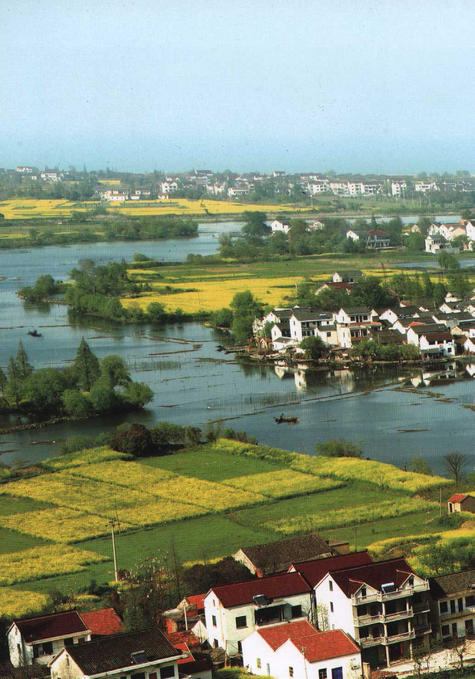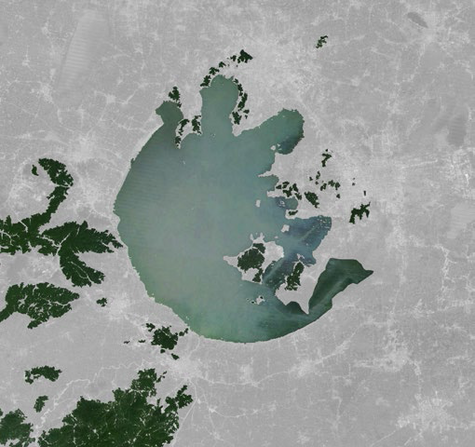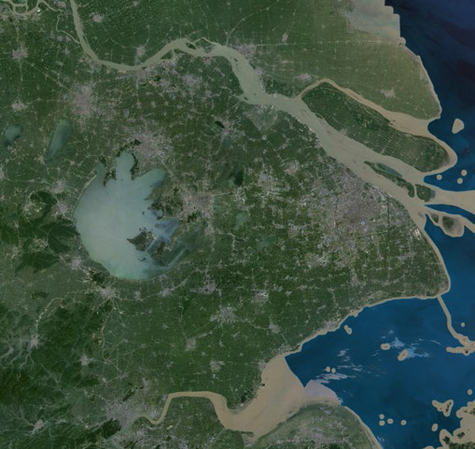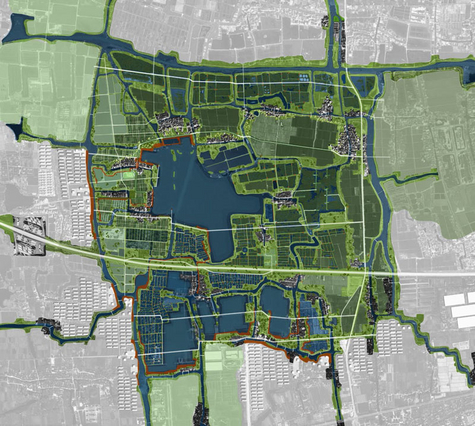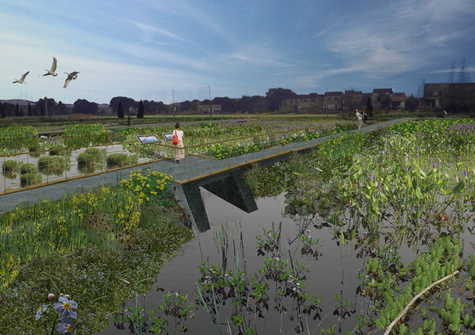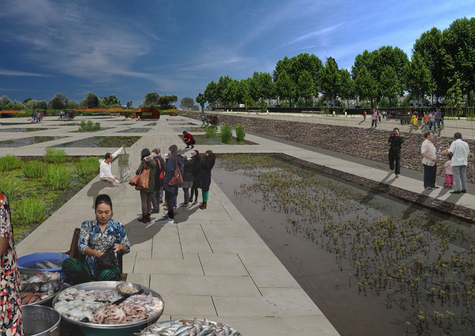Judith van der Poel
Watery Huzhou: Cultural landscapes as basis for a new green structure
Great changes are currently taking place in the city of Huzhou in China. Unique landscape and villages are disappearing beneath the violence of new housing blocks, that are rising from the ground in straight lines. The city will grow from 216,000 inhabitants to 980,000 inhabitants by 2030.
Cultural landscapes
The city has a rich history. The surrounding cultural landscape consists of many historic canals and fanciful, growth-covered ‘dykes’. Aound the year 700, the canals were dug in order to prevent floods from the large salt-water lake. Moreover, this meant that the water could be controlled and areas could in this way be irrigated during dry periods. The water cultivation was expanded and by placing many dams, they lived in perfect symbiosis with the water. All villages had stairs to the water, and because all transport was done using boats, there were few roads. As a result of later economic developments, this balance with nature was lost. The current human way of living has had a mostly negative influence on the water quality, due to a surplus of fertilisers, and urban and industrial pollution. Water pollution, air pollution and the ‘urban heat island effect’ is now the order of the day and will grow worse with the enormous urbanisation in the future.
The urban planning vision of the government demonstrates a plan in which the existing landscape is not or hardly taken into account. All Chinese cities will consequently resemble each other. This is a big problem for the future identity of many Chinese cities. My assignment is to develop an alternative master plan for the future green structure of Huzhou, which is in balance with the unavoidable urban development. By incorporating the existing landscape in the master plan, the local culture will remain visible and the people will keep a strong bond with their environment. Moreover, the unique identity will attract tourists.
The current water and dyke structure in this area forms the basis for the new green structure. The environmental problems are reduced by literally making space for green zones at strategic
locations. The distances to the parks become considerably smaller, so that people can more easily make use of the green facilities in their neighbourhood. Parts of the agricultural regions
will, as a result, be transformed into city parks. These will become unique parks by making use of local principles, traditions and activities.
People
The people in the region and their ancestors made the landscape into what it is now. I was, therefore, extremely interested in their story. Thanks in part to the Stichting NHBOS (NHBOS Foundation), I was able to visit the region. I had the opportunity to speak to the local population with the help of an interpreter. As a result, I learnt a lot about the local culture and the wishes of the inhabitants. They will also live in this city soon, so they are an important source of support for my plan. The centuries-old tradition of living with the water says a lot about the creation of...
Commission members: Rik de Visser (mentor), Boudewijn Almekinders, Bruno Vermeersch. Additional members for the examination: Roel van Gerwen, Paul Achterberg.

